One of the main questions I have received since deciding to apply to a Fulbright based in Ireland, accept said Fulbright, and move to Ireland is: why Ireland? In fact, I received this question so much in the lead up to my move that I started asking myself: “Why Ireland, Allison?! You don’t even really like Guinness??” (Side note: I am in the process of training myself to actually like the dark ale).
Truthfully, when I decided to apply to the Fulbright all I knew for sure was that I wanted an opportunity to live and to work abroad. I wanted to explore art history and museum work outside of my American bubble. I wanted to challenge myself to try new things and to meet new people— to immerse myself in a new culture. Discovering this specific Fulbright came hand in hand with those goals, and the fact that it was based in a museum in Dublin was really just a piece of the puzzle I was putting together (although it would quickly become an essential piece— a corner piece of a very complicated, 1000 piece puzzle, if you will).
I think the best way to encapsulate this drive I had— and still have— is to share part of my Fulbright application; specifically, my Personal Statement. When applying to any Fulbright, one writes an elaborate, two page (single spaced!) Statement of Grant Purpose that states one’s goals abroad in the most detailed way possible: the who, what, where, when, and why of a proposed project. But the Fulbright also offers this glorious opportunity to write a page long statement that is more raw and vulnerable… at least, I interpreted it that way. This part of the application, the Personal Statement, is a chance to sum up who you are in 500 words or so, and how this sense of self relates to your applying for a Fulbright.
So below I am copying my Personal Statement— a sneak peak of the Allison that so desperately wanted the opportunity to live and work abroad a year ago, and an explanation of the experience that triggered these feelings. The flame I felt within me while writing this statement burns on, guiding me day by day as I navigate a new city in a new country filled with new people.
September 2022: Fulbright Personal Statement
In the summer of 2022, under the generous support of the Shelby White and Leon Levy Travel Grant, I travelled to the 59th Venice Biennale. This renowned cultural exhibition brings together the work of emerging artists, curators, and historians across the world. During the show, the historic city becomes enlivened with contemporary art; a beautiful blend— and interrogation— of old versus new.
I planned this trip as an independent expedition, believing that the art would provide me with ample companionship. Yet as I approached Venice on the ferry from Marco Polo Airport, watching the floating city emerge on the horizon while listening to conversations I couldn’t understand in rapid Italian, I was overwhelmed with a daunting feeling of loneliness. I began to wonder if I had made a mistake. I was emerging from a difficult prior year of sickness, loss, and mourning, during which I had consistently dealt with an intense feeling of isolation. Why, then, had I then chosen to travel by myself, to a city full of strangers?
But as I encountered the work of artists from across the globe in the presence of an equally diverse crowd of exhibition goers, my fears and anxieties subsided. Rather than isolation, I felt a strong sense of community. I gasped with strangers as we closely examined the intricate tapestry of Igshaan Adams, a South African artist who utilizes the materials of Cape Town to weave topographic maps of “desire paths,” revealing human-made walkways across segregated borders during the Apartheid. I silently wept with strangers as we watched a film by American artist Nan Goldin, focusing on people who live outside of established gender constructions. I gleefully laughed with strangers while looking at Belgium artist Francis Alÿs’s documentation of the universal tendency of children to autonomously play games across cultures and adversities.1
In the end, my main takeaway from the Biennale was not a grand, art historical conjecture; rather, it was a staunch reminder of the power of art to touch the core of humanity, offering new means of human connection— even in times of extreme division or emotional lonesomeness. Viewing these contemporary works upon the walls of grandiose, Venetian gothic architecture, I further recognized that this power of art transcends time. Since the earliest evidence of artistic production, art has brought together groups of people, educated the masses, and sparked societal progress and change.
Since returning to New York City, where I am studying art history as an aspiring curator at NYU’s Institute of Fine Arts, the lessons of my trip have stuck with me. In order to be a curator, one needs to be a specialist in their field; traditionally, this leads to pursuing a PhD. But for now, I believe that the best place for me to understand art’s potential as a catalyst for human connection and dialogue is outside of academia and in the real world, among the diverse populations where this can occur.
There is no better opportunity to do this than spending a year in Dublin, immersed in a city that— like Venice— offers a robust cultural history closely entwined with ongoing modernity. While working at the Hugh Lane Gallery, I plan to continue gasping, weeping, and laughing with strangers as we explore art’s relation to Irish cultures. By doing so, I will better understand how curatorial strategies turn feelings of isolation into those of connection, building new bridges across old divides, and “turning nations into people,” as was Senator James William Fulbright’s intention in establishing the Fulbright Program.
Through this experience, I will be able to return to America as a more globally conscious and accessible curator who is capable of both illuminating the unique identities and experiences that fabricate humanity across cities, cultures, and nations, while also reinforcing what I felt so strongly in Venice: we aren’t really strangers.
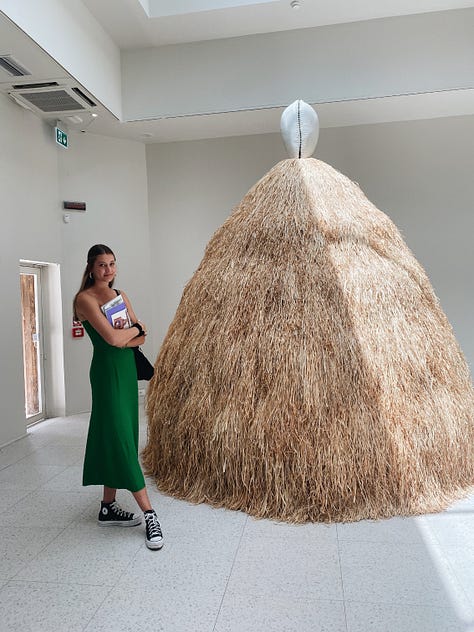

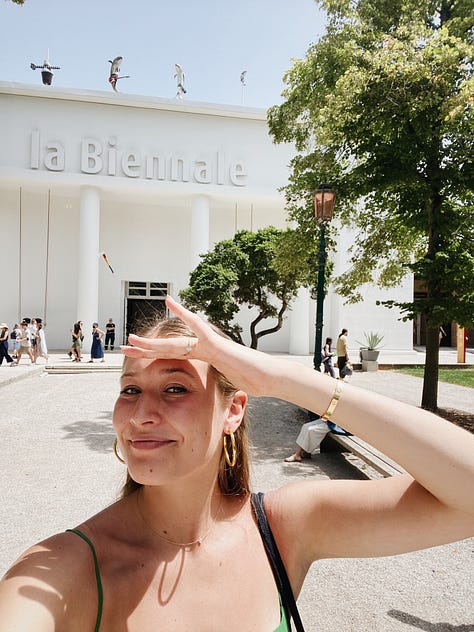
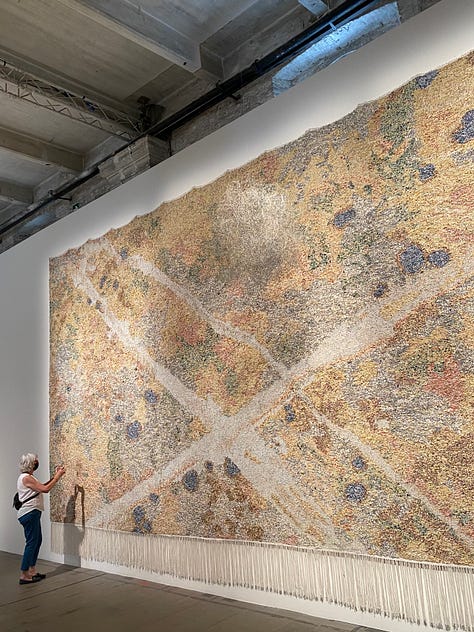
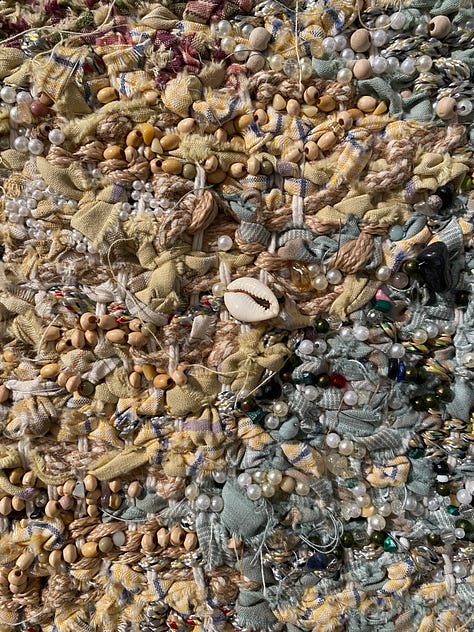
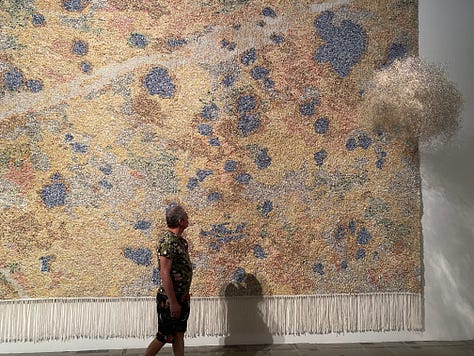
Other highlights from the last week of living in Dublin:
I ran a 5k. I know, you are shocked to read this ground-breaking news. I probably should have titled this article “ALLIE RAN A 5K.” That would have resulted in more clicks. Mainly because, if you know me, you know that running and I do not get along. But in a desperate attempt to bond with some wonderful new friends, I joined them in signing up for a 5K. And not just any 5k. An evening 5k. Imagine this scenario: you finally get home from a long day of work. It is cold and pouring rain outside, and you just want to snuggle up on your couch, turn on Gilmore Girls, and remain there— unmoving and horizontal— for at least two hours. But NO. Instead, you have to head over to a designated meeting point to collect your “bib” and run 5 kilometres on the BEACH in the middle of October, amidst low tide, extreme winds, and rain. Okay, maybe I am being a little dramatic. But this felt like my New York City Marathon. And I am really proud to announce I persevered, finishing the “race” at a time not worth mentioning. I was also presented with a nice shiny metal that does not specify whether I ran the 5K or the 10K that was also occurring that night, so I guess you could say it was all worth it as now I have a badge of honor to flex my somewhat ambiguous running capabilities. The best part of the night was the celebratory pint and food after the run in a nearby, cozy pub. Everyone got burgers but I weirdly went for the tacos, which ended up being more like cold tostadas. I deserved this as I made the decision to order Mexican food at a pub in Dublin.
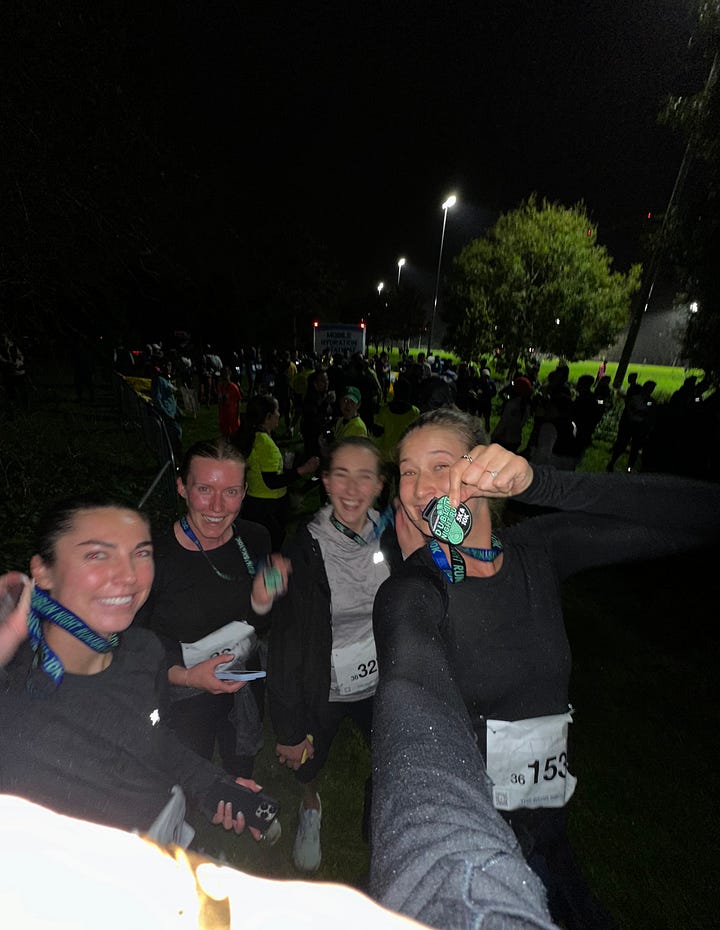
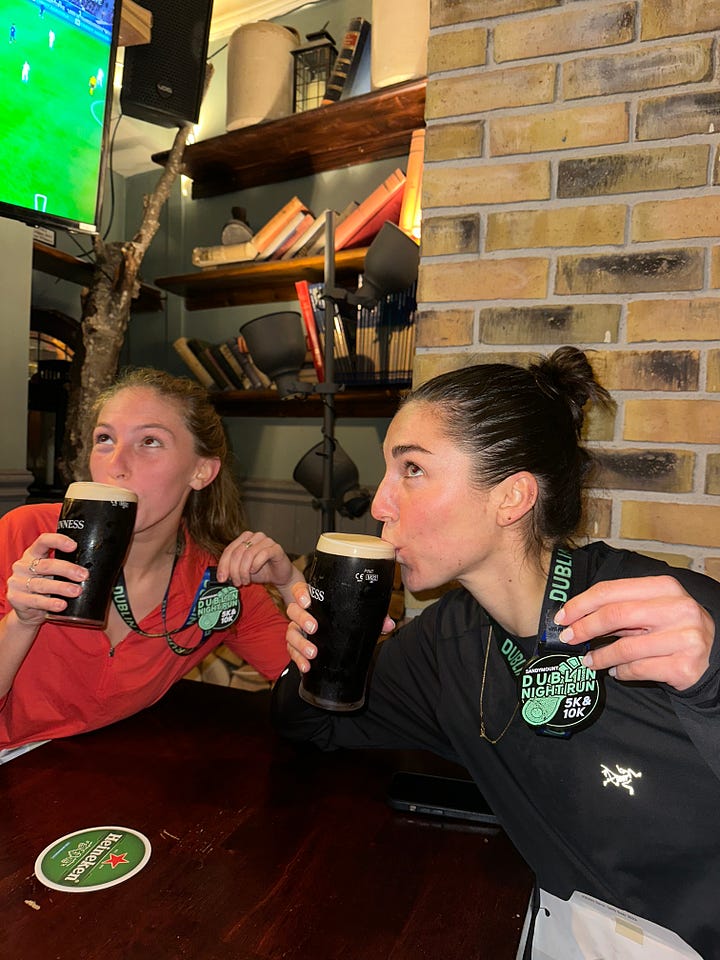
I attended my official Fulbright orientation hosted by the Ireland Fulbright Commission. The day was full of wonderful talks by Ireland Fulbright Alumni, local diplomats and politicians, and the Fulbright award officers, along with many introductions and conversations with the other, current Fulbrighters who also recently moved to Ireland from the U.S. I was blown away by the scope of projects my peers are working on; from considering the intersection of contemporary clarinet performance with Irish traditional music, to explorations of oral storytelling and printmaking as a means of investigating the idiosyncrasies of Yeats’s stories retold, to investigations of new medical technologies to assist in nerve repair. After dinner the evening culminated in a guided Céilí, or traditional Irish dance, at Comhaltas in Monkstown . I can confidently make the formal announcement that I will not be partaking in traditional Irish dance again any time soon. My height simply is not built for it. There will be no further questions at this time.
I watched an England vs. South Africa rugby match at a pub sandwiched between a group of English tourists and South African fans. I tried to play Switzerland as a means of self protection.
I turned to art as a form of therapy. On Sunday, feeling homesick and far from those I love, I took myself to the Irish Museum of Modern Art. There I came across the exhibition “A Renewed Language,” surveying the art of American artist Howardena Pindell (b. 1943). The exhibition mediated between Pindell’s experimentations with abstraction in the 1960s to her later, overt reflections on the plight of racism in America— both in the context of exclusion from society and discrimination from the art world. I have many thoughts, namely considering the collection and display of memories, through means of abstraction, to overt imagery, and back to abstraction again. I plan to write more about this in a future post. But for now, I will just say that this experience reminded me of the solace that art can provide in moments of loneliness. Even art grappling with difficult themes offers a context where these topics can be considered jointly with others— sometimes silently, but always as a makeshift, perhaps momentary community, bonded by the walls of a gallery. In the presence of art, we are not really strangers.
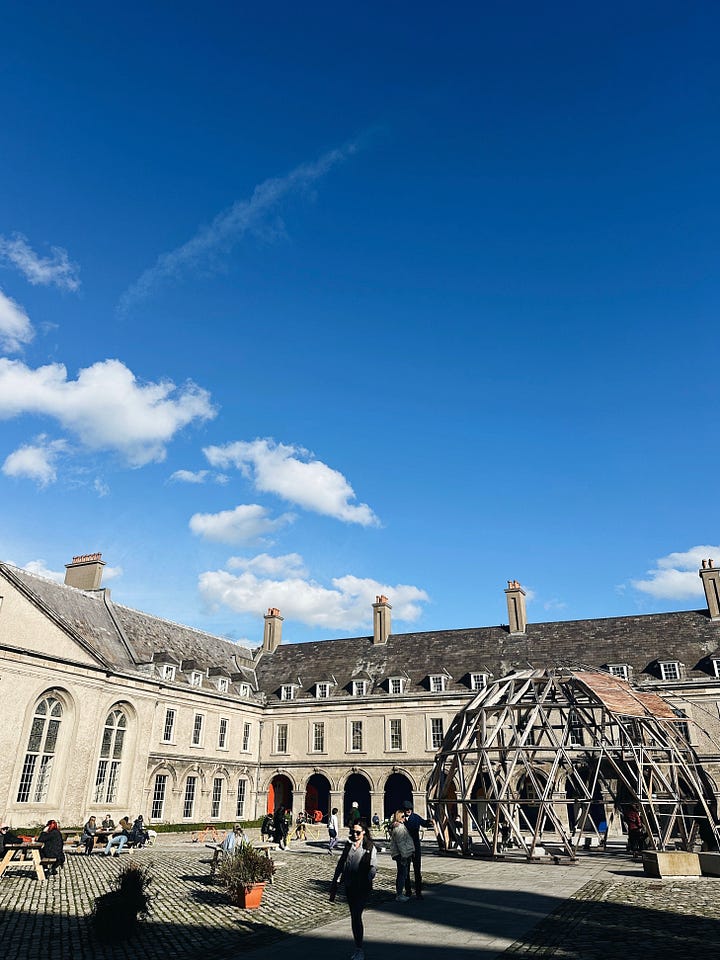

The IMMA and a work of Pindell titled "Untitled #7 (Carnival, Bahia, Brazil)," 2022.
Is mise le meas,
Allison
Hey! Remember that time I said I would never use footnotes in these posts? I lied! But this feels like an important exception. Since writing my Personal Statement I have thought a little more critically about the work of Alÿs that was presented at the Bienalle. In many ways, his exhibition in Venice, “The Nature of the Game,” can be interpreted as problematic. A white man enters neighborhoods in Hong Kong, the Democratic Republic of Congo, Mexico, Iraq, Afghanistan, and so on. He films these aesthetically pleasing moments of children at play. When exhibited all together, the montages convey a romanticized universality of playfulness; the ubiquitous inclination of children to structure games across the world. (You can see the collection of films here). As Hilde Teerlinck, the curator of “The Nature of the Game,” explains: “His films record, in an ethnographical way, both the power of cultural tradition and the free and autonomous attitudes of children, even in the most conflicted of situations.” But it is certainly worth asking: what is left out of this simplified narrative or “ethnographical” survey? It is not that Alÿs does not consider the conflicts many of these children endure— he does, specifically in the small paintings that accompanied his films where children are rendered playing as fighter jets fly overhead, or smoke billows on the horizon. But this further adds to the generalized narrative; atrocities persist (as seen in the more whimsical compositions of the paintings) but we find solace in the fact that children continue to play (as seen actual recordings of children). As you can tell from my Statement, I was initially entranced by the notion of play as perhaps a momentary escape from harsh realities and a means of global connection. I spent a lot of time in this gallery truly enjoying the captivating beauty and gleefulness of the films, meditating on the patterns of play…. and even reflecting on myself as a child who loved playing imaginary games with her sister, especially amidst the familial hardships that the two of us, at times, endured. But after some time and distance from the exhibition I find myself questioning what this claim of cross-cultural universality negates. What does this foreigner choose to capture and choose to ignore? Do the films attempt to equalize human existence and belittle the nuanced experiences of children who are raised in drastically different contexts? What do you think? I am curious.





As an amateur art connoisseur and aficionado, I somewhat agree and disagree
Your personal statement is a very moving piece of writing. Comment on your footnote: One of the great things about art is the wide range of responses it can elicit. Your two very different reactions are perhaps a case in point. I suppose everyone looks and understands through the lens of own unique experiences & lives, their education and even the label accompanying the piece telling you to some extent what to think. That’s one reason I always spend some time looking at something before reading information provided about it. In your case your were struck by the piece enough to go off and keep thinking about it. More on this when I see you